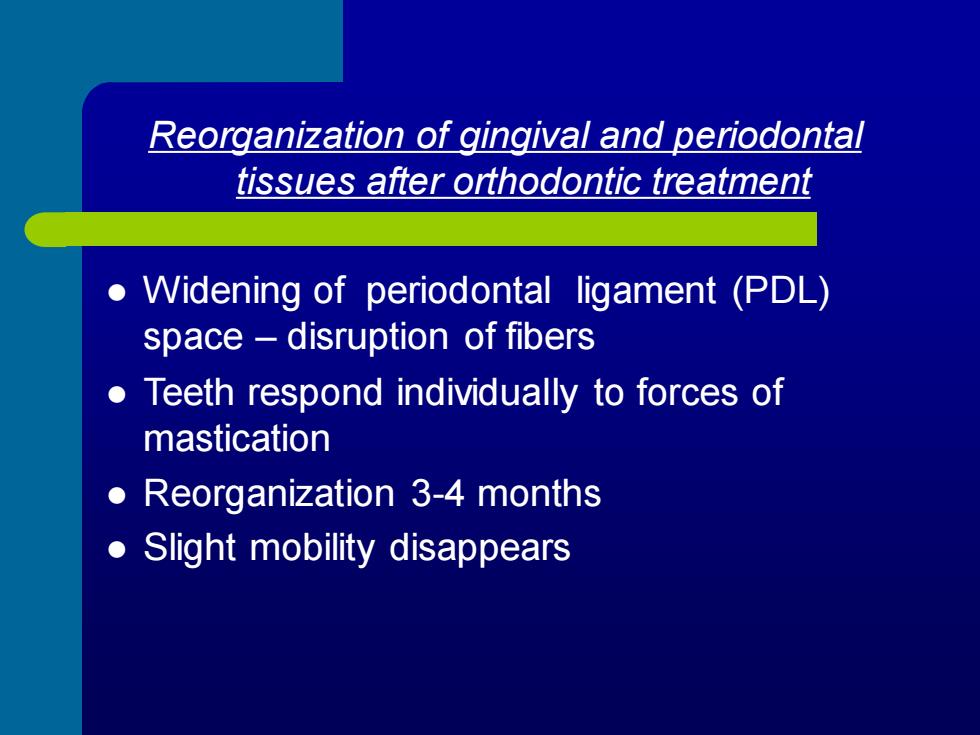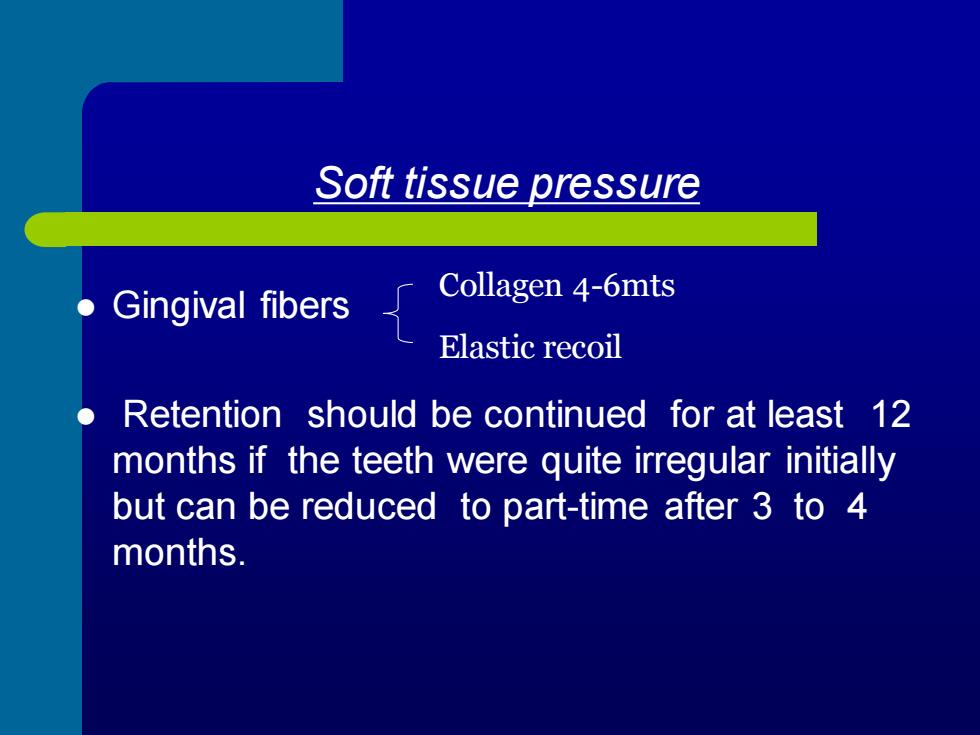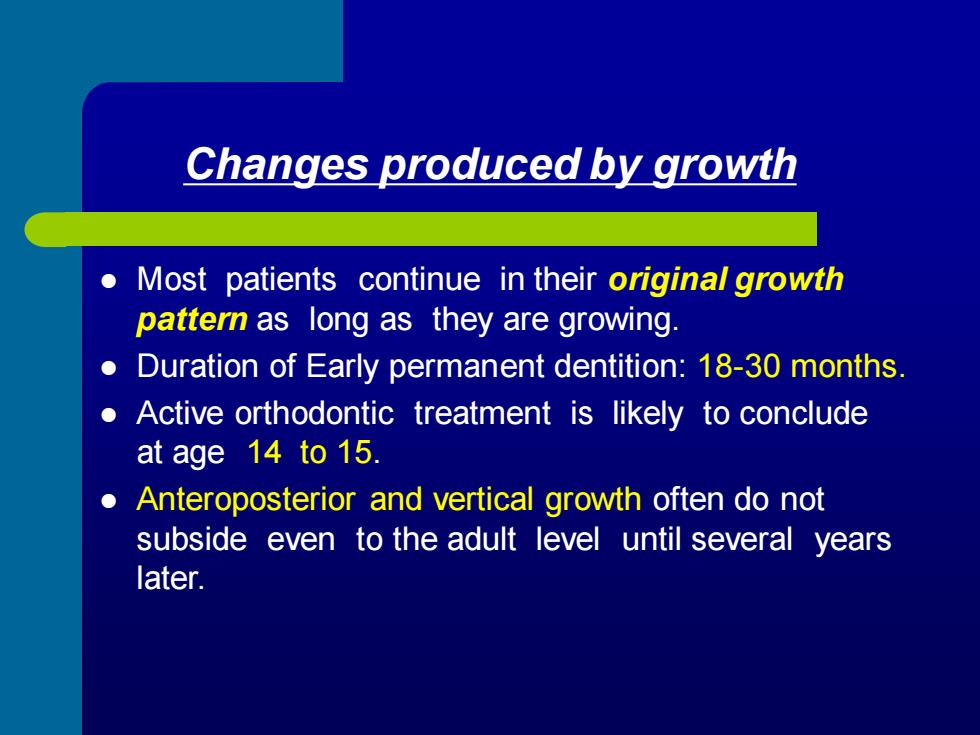
Reorganization of gingival and periodontal tissues after orthodontic treatment Widening of periodontal ligament (PDL) space disruption of fibers o Teeth respond individually to forces of mastication Reorganization 3-4 months Slight mobility disappears
Reorganization of gingival and periodontal tissues after orthodontic treatment ⚫ Widening of periodontal ligament (PDL) space – disruption of fibers ⚫ Teeth respond individually to forces of mastication ⚫ Reorganization 3-4 months ⚫ Slight mobility disappears

Soft tissue pressure Gingival fibers Collagen 4-6mts Elastic recoil Retention should be continued for at least 12 months if the teeth were quite irregular initially but can be reduced to part-time after 3 to 4 months
Soft tissue pressure ⚫ Gingival fibers ⚫ Retention should be continued for at least 12 months if the teeth were quite irregular initially but can be reduced to part-time after 3 to 4 months. Collagen 4-6mts Elastic recoil

Changes produced by growth Most patients continue in their original growth pattern as long as they are growing. ● Duration of Early permanent dentition:18-30 months. Active orthodontic treatment is likely to conclude at age 14 to 15. ● Anteroposterior and vertical growth often do not subside even to the adult level until several years later
Changes produced by growth ⚫ Most patients continue in their original growth pattern as long as they are growing. ⚫ Duration of Early permanent dentition: 18-30 months. ⚫ Active orthodontic treatment is likely to conclude at age 14 to 15. ⚫ Anteroposterior and vertical growth often do not subside even to the adult level until several years later

Need for retention Elastic Recoil of Gingival Fibers Intra-Arch Irregularity Cheek Lip /Tongue Pressure Changes in Occlusal Relationship Differential Jaw Growth
Need for retention Elastic Recoil of Gingival Fibers Cheek / Lip / Tongue Pressure Differential Jaw Growth Intra-Arch Irregularity Changes in Occlusal Relationship

THEOREM-1 TEETH THAT HAVE BEEN MOVED TEND TO RETURN TO THEIR FORMER POSITIONS. Reasons: ●Musculature ●Apical base ●Transseptal fibers ●Bone morphology General agreement over holding teeth in their corrected positions
Theorem - 1 Teeth that have been moved tend to return to their former positions. – Reasons : ⚫ Musculature ⚫ Apical base ⚫ Transseptal fibers ⚫ Bone morphology General agreement over holding teeth in their corrected positions